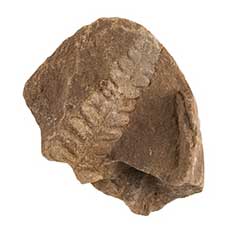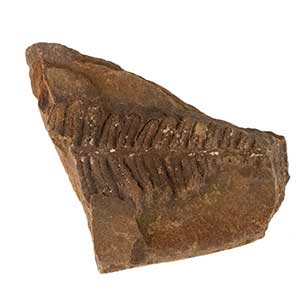Sign up for Lesson Plans, discounts & more!
Mazon Creek Fossils
Mazon Creek fossils have fascinated scientists and fossil enthusiasts for decades due to their exceptional preservation and diverse range of organisms. These fossils are found in the Mazon Creek area of northeastern Illinois, USA, and are estimated to be from the Carboniferous Period, approximately 307 to 299 million years ago.
Why are Mazon Creek Fossils so pristine?
The preservation of Mazon Creek fossils is truly extraordinary. Many of these fossils exhibit remarkable detail, including delicate soft tissues that are rarely preserved in the fossil record. This exceptional preservation can be attributed to the specific conditions in which these fossils formed.
During the Carboniferous period, the Mazon Creek region was a vast wetland environment, consisting of swamps and shallow marine habitats. As plants and animals died, their remains sank into the sediments at the bottom of these ancient bodies of water. The fine-grained sediments effectively encapsulated and protected these organisms, preventing rapid decomposition.
One factor that contributed to the exceptional preservation of Mazon Creek fossils is the anoxic, or low-oxygen, conditions of the sediments. The lack of oxygen halted the decay processes that would typically destroy organic material, allowing for the preservation of soft tissues such as skin, muscles, and even internal organs. As a result, Mazon Creek fossils often provide a detailed snapshot of ancient organisms, revealing aspects of their anatomy that are rarely preserved elsewhere.
The variety of organisms found in the Mazon Creek fossil beds is truly astonishing. These fossils include a wide range of plant and animal species, providing valuable insights into the biodiversity and ecological dynamics of the Carboniferous period.
One of the iconic fossils from the Mazon Creek beds is the Tully monster (Tullimonstrum gregarium), which remains an enigmatic creature. It was first discovered in the 1950s and quickly gained attention due to its unusual and unique characteristics.

Alongside the Tully monster, Mazon Creek fossils include beautifully preserved plants, such as ferns, which provide insights into the ancient flora of the area. Fossilized crinoids, or sea lilies, showcase the diverse marine life present at the time. Horseshoe crabs, insects, amphibians, and fish are among the many other organisms found in the Mazon Creek deposits.

These fossils have played a crucial role in understanding the ancient ecosystems and evolutionary history of the Carboniferous period. They have helped scientists reconstruct the interactions between various organisms and the environment, shedding light on the prehistoric world.
In addition to their scientific significance, Mazon Creek fossils have captivated amateur collectors and fossil enthusiasts. Their intricate detail and exquisite preservation make them highly sought after for study and display. They not only provide a glimpse into the past, but also inspire a sense of wonder and fascination with the diversity and beauty of life that existed millions of years ago.
Mazon Creek fossils continue to be a rich source of research, discovery, and appreciation. With ongoing exploration and study, these fossil beds hold the potential to unveil even more secrets about the ancient world and its inhabitants.
Find Mazon Creek Fossils here!
Check out some of the Educational Materials for sale on our sister site fossilicious.com.

interested in more? If so, you may want to check out our other sites:
fossilicious.com - Our online fossil and mineral rock shop.
rocksandminerals4u.com - An educational site about rocks, minerals, and geology.
Geologic Time Geologic Time Line
Cenozoic Era
Quaternary
Neogene
Paleogene
Mesozoic Era
Cretaceous
Jurassic
Triassic
Paleozoic Era
Permian
Carboniferous
Devonian
Silurian
Ordovician
Cambrian
Archean Time
Hadean Time
Teachers Resources
Activities for Education and Fun
Earth Science Lesson Plans
Activities For Kids
Fossil Lesson Plans
Fossil Activities
Education Articles
Coloring Pages
Dinosaur Coloring Pages
Montessori Materials
Geology Club
Fossil Hunting
 |
 |
 |




